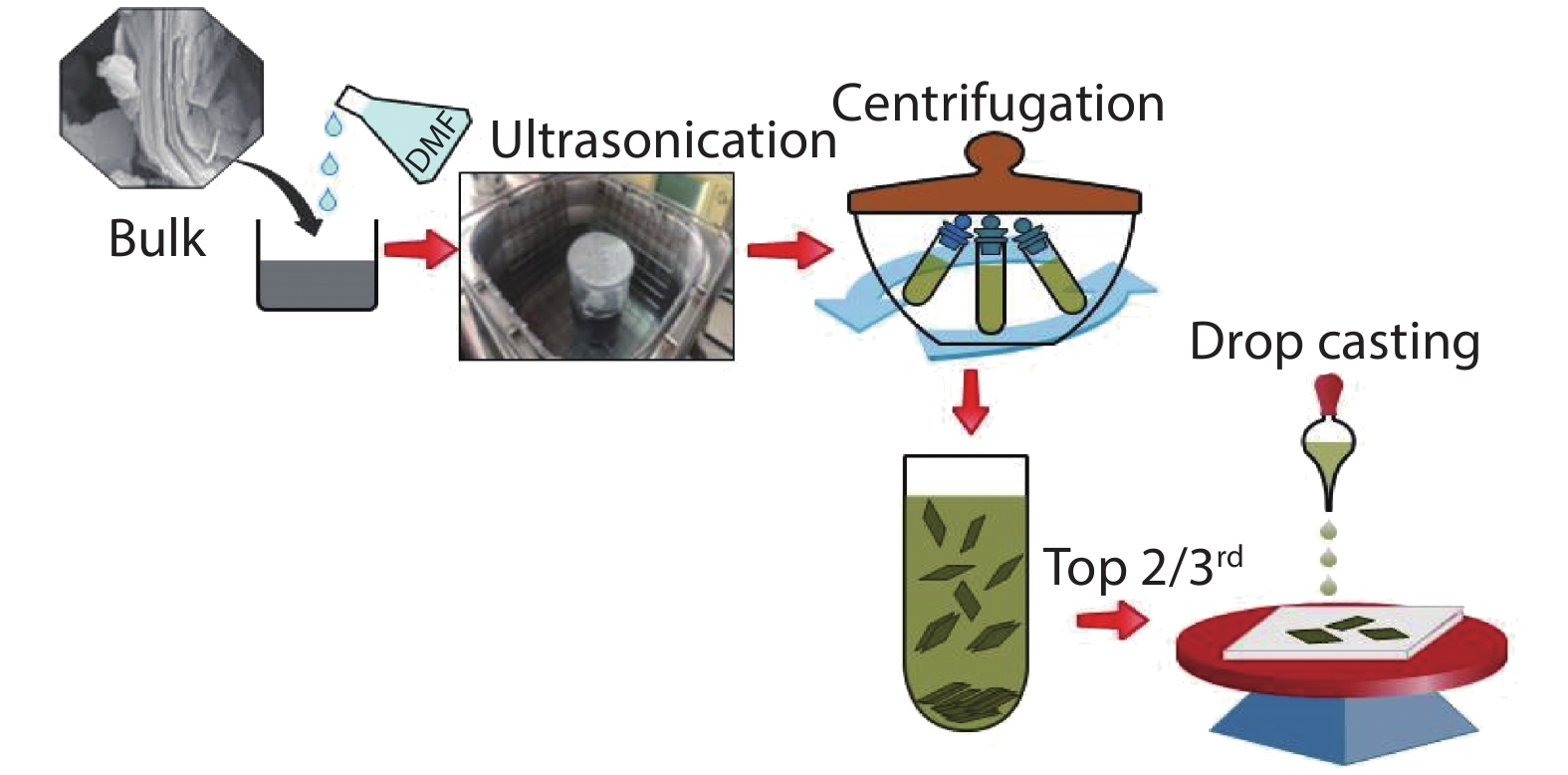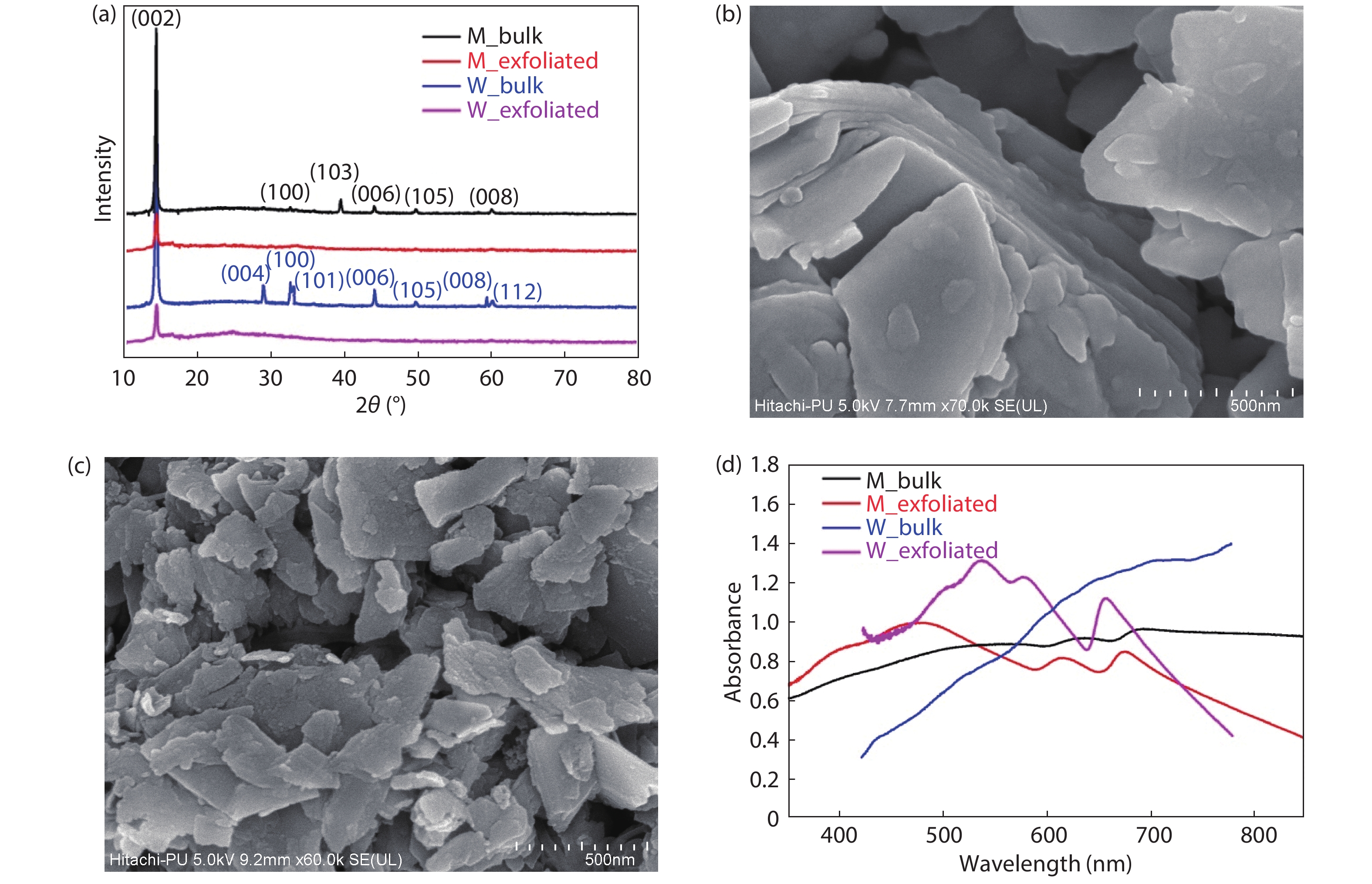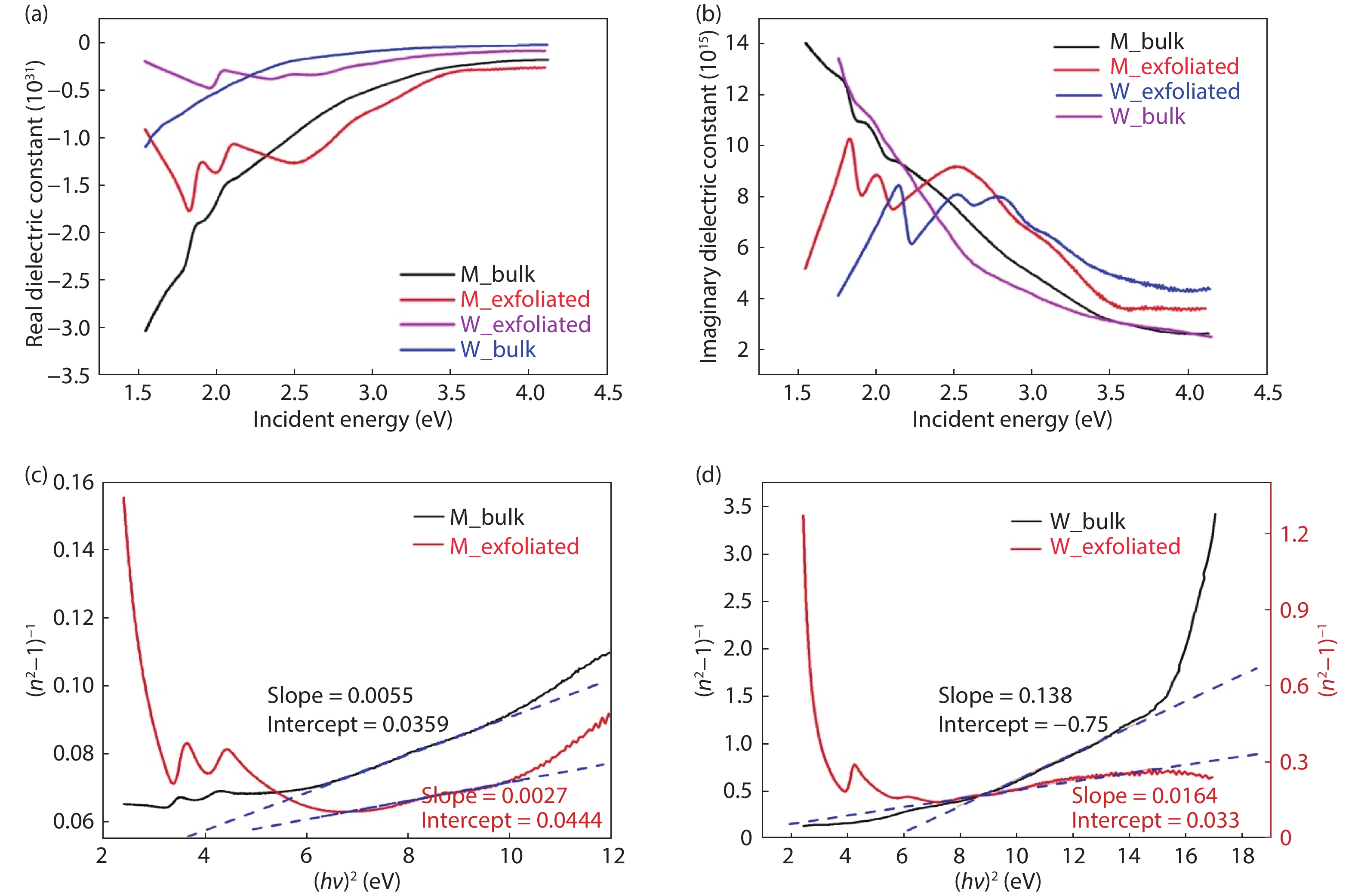| Citation: |
Ankush Parmar, Jashangeet Kaur, Manish Dev Sharma, Navdeep Goyal. Extensive study of optical contrast between bulk and nanoscale transition metal dichalcogenide semiconductors[J]. Journal of Semiconductors, 2021, 42(8): 082001. doi: 10.1088/1674-4926/42/8/082001
****
A Parmar, J Kaur, M D Sharma, N Goyal, Extensive study of optical contrast between bulk and nanoscale transition metal dichalcogenide semiconductors[J]. J. Semicond., 2021, 42(8): 082001. doi: 10.1088/1674-4926/42/8/082001.
|
Extensive study of optical contrast between bulk and nanoscale transition metal dichalcogenide semiconductors
DOI: 10.1088/1674-4926/42/8/082001
More Information
-
Abstract
A remarkable refinement in the optical behavior of two-dimensional transition metal dichalcogenides (TMDs) has been brought to light when cleaved from their respective bulks. These atomically thin direct bandgap semiconductors are highly responsive to optical energy which proposes the route for futuristic photonic devices. In this manuscript, we have substantially focused on the optical study of MoS2 and WS2 nanosheets and comparative analysis with their bulk counterparts. The synthesis of nanosheets has been accomplished with liquid exfoliation followed by fabrication of thin films with drop-casting technique. X-ray diffraction and field emission scanning electron microscopy affirmed the morphology, whereas, UV–visible spectroscopy served as the primary tool for optical analysis. It was observed that several parameters, like optical conductivity, optical band-gap energy etc. have enhanced statistics in the case of exfoliated nanosheets as compared to their respective bulks. Some researchers have touched upon this analysis for MoS2, but it is completely novel for WS2. We expect our work to clearly distinguish between the optical behaviors of nanoscale and bulk TMDs so as to intensify and strengthen the research related to 2D-layered materials for optoelectronic and photovoltaic applications. -
References
[1] Gan X R, Zhao H M, Quan X. Two-dimensional MoS2: A promising building block for biosensors. Biosens Bioelectron, 2017, 89, 56 doi: 10.1016/j.bios.2016.03.042[2] Deb S, Chakrabarti P, Mohapatra P K, et al. Tailoring of defect luminescence in CVD grown monolayer MoS2 film. Appl Surf Sci, 2018, 445, 542 doi: 10.1016/j.apsusc.2018.03.165[3] Sekine T, Julien C, Samaras I, et al. Vibrational modifications on lithium intercalation in MoS2. Mater Sci Eng B, 1989, 3, 153 doi: 10.1016/0921-5107(89)90195-5[4] Kelly A G, Vega-Mayoral V, Boland J B, et al. Whiskey-phase exfoliation: Exfoliation and printing of nanosheets using Irish whiskey. 2D Mater, 2019, 6, 045036 doi: 10.1088/2053-1583/ab3892[5] Wang Q, Kalantar-Zadeh K, Kis A, et al. Electronics and optoelectronics of two-dimensional transition metal dichalcogenides. Nat Nanotechnol, 2012, 7, 699 doi: 10.1038/nnano.2012.193[6] Ji S S, Yang Z, Zhang C, et al. Exfoliated MoS2 nanosheets as efficient catalysts for electrochemical hydrogen evolution. Electrochimica Acta, 2013, 109, 269 doi: 10.1016/j.electacta.2013.07.094[7] Tudorache F, Popa P D, Dobromir M, et al. Studies on the structure and gas sensing properties of nickel-cobalt ferrite thin films prepared by spin coating. Mater Sci Eng B, 2013, 178, 1334 doi: 10.1016/j.mseb.2013.03.019[8] Vikraman D, Hussain S, Truong L, et al. Fabrication of MoS2/WSe2 heterostructures as electrocatalyst for enhanced hydrogen evolution reaction. Appl Surf Sci, 2019, 480, 611 doi: 10.1016/j.apsusc.2019.02.236[9] Yim C, O'Brien M, McEvoy N, et al. Investigation of the optical properties of MoS2 thin films using spectroscopic ellipsometry. Appl Phys Lett, 2014, 104, 103114 doi: 10.1063/1.4868108[10] Reshak A H, Auluck S. Calculated optical properties of 2H-MoS2 intercalated with lithium. Phys Rev B, 2003, 68, 125101 doi: 10.1103/PhysRevB.68.125101[11] Kaur J, Parmar A, Tripathi S K, et al. Optical Study of Ge1Sb2Te4 and GeSbTe thin films. Mater Res Express, 2019, 6, 046417 doi: 10.1088/2053-1591/aafc03[12] Saha N, Sarkar A, Ghosh A B, et al. Highly active spherical amorphous MoS2: Facile synthesis and application in photocatalytic degradation of rose Bengal dye and hydrogenation of nitroarenes. RSC Adv, 2015, 5, 88848 doi: 10.1039/C5RA19442C[13] Çabuk S, Mamedov A. Urbach rule and optical properties of the LiNbO3 and LiTaO3. J Opt A, 1999, 1, 424 doi: 10.1088/1464-4258/1/3/313[14] Galeczki G. Wemple-didomenico plots for the refractive index of PbTe. Infrared Phys, 1991, 31, 215 doi: 10.1016/0020-0891(91)90049-L[15] Jha R, Santra S, Guha P K. Green synthesis route for WS2 nanosheets using water intercalation. Mater Res Express, 2016, 3, 095014 doi: 10.1088/2053-1591/3/9/095014[16] Tian X J, Wu J Y, Li Q, et al. Scalable production of few-layer molybdenum disulfide nanosheets by supercritical carbon dioxide. J Mater Sci, 2018, 53, 7258 doi: 10.1007/s10853-018-2053-6[17] Dong N N, Li Y X, Feng Y Y, et al. Optical limiting and theoretical modelling of layered transition metal dichalcogenide nanosheets. Sci Rep, 2015, 5, 14646 doi: 10.1038/srep14646[18] Yasmeen S, Iqbal F, Munawar T, et al. Synthesis, structural and optical analysis of surfactant assisted ZnO-NiO nanocomposites prepared by homogeneous precipitation method. Ceram Int, 2019, 45, 17859 doi: 10.1016/j.ceramint.2019.06.001[19] Devangamath S S, Lobo B. Optical parameters of epoxy-CoSO4·7H2O polymer hybrid material. Mater Res Innov, 2020, 24, 152 doi: 10.1080/14328917.2019.1619272[20] Kaur J, Parmar A, Tripathi S K, et al. Temperature-dependent opto-electronic properties of Ge2.53Sb4.89Te2.50 thin films. Phase Transitions, 2020, 93, 134 doi: 10.1080/01411594.2019.1687894 -
Supplements
 21030010suppl.pdf
21030010suppl.pdf

-
Proportional views






 DownLoad:
DownLoad:




















